Nestled in the picturesque hills of Vietnam, Non Nuoc stone carving village is a place where tradition and art meet. In this article, we will take you through a brief historical tour online and show why you should definitely visit this place when visiting Vietnam.
- 1. The Timeless Charm of Non Nuoc Stone Carving Village
- 2. Exploring Non Nuoc Stone Carving Village's Unique Stone Carving Techniques
- 3. The role of the Stone Carving Village in Vietnam's economy, culture and arts
- 4. Current challenges and opportunities of the Stone Carving Village
- 5. Planning your visit to Non Nuoc Stone Carving Village
- 6. Conclusion
1. The Timeless Charm of Non Nuoc Stone Carving Village
1.1. Overview of the Non Nuoc Stone Carving Village
Non Nuoc stone carving village, also known as Non Nuoc marble village, is situated at the foot of the majestic Marble Mountains, in the Hoa Hai ward, Ngu Hanh Son district of Da Nang. It is conveniently located just 8 km away from the bustling city centre of Da Nang and a mere 15 km from the enchanting Hoi An ancient town.
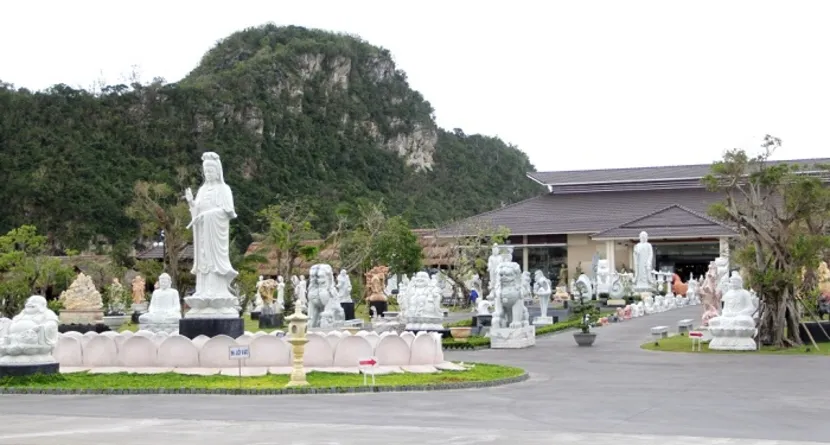
The Non Nuoc stone carving village is also known as Non Nuoc marble village
This village is a true embodiment of Vietnamese culture, boasting an impressive array of over 600 workshops. Each of these workshops specialises in crafting exquisite stone carvings, including statues, Buddha statues, and various household items. As you step foot into the Non Nuoc Da Nang stone village, you will be transported to a realm of stones, surrounded by an assortment of large and small stone blocks in all imaginable shapes.

Large art work at Non Nuoc Stone Carving Village
1.2. History of the village and its stone carving tradition
The birth of this Vietnam Stone Carving Village can be traced back to the late 17th century and the early 18th century. It was during this time that Mr. Huynh Ba Quat, a native of Thanh Hoa who settled in Ngu Hanh Son mountain, Da Nang, discovered a cluster of granite mountains. These mountains were composed of a unique type of stone that possessed the potential to be transformed into exquisite stone art works.
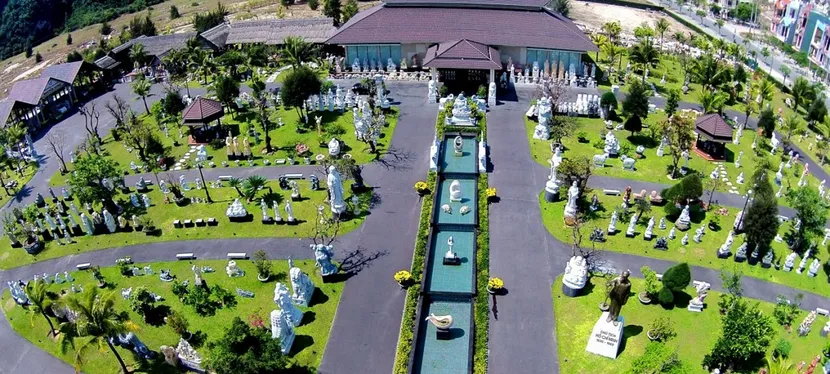
Non Nuoc stone carving village has a rich cultural story
However, it was not until the beginning of the 19th century, during the prosperous reign of the Nguyen Dynasty, that Non Nuoc stone carving village truly flourished. The Nguyen Dynasty commissioned the construction of numerous mausoleums and palaces adorned with intricate fine art stones. This presented a golden opportunity for the artisans of Non Nuoc to showcase their skills and contribute to the grandeur of these royal structures. In recognition of their exceptional craftsmanship, many talented stone masons were bestowed with high titles and held in great esteem by the king.
2. Exploring Non Nuoc Stone Carving Village's Unique Stone Carving Techniques
2.1. Types of stones used in the carving process
The Non Nuoc Stone Carving Village is renowned for its exquisite handicrafts made from stone. In the past, the village primarily sourced its stone from Ngu Hanh Son mountain. However, the extensive quarrying activities led to the loss of the mountain's natural beauty. Hence, the government imposed a ban on stone mining in the area. Now the craft village acquires its raw materials from other locations, with an impressive annual output of tens of thousands of tons.

The craft village currently procures raw materials from both domestic and international sources
The village has access to a wide range of stone sources, both domestically and internationally. Locally, they procure various types of granite, such as blue, white, yellow, and carrot red granite. They also obtain Nghe An white stone, Yen Bai granite and marble, multi coloured granite from Thanh Hoa, wood grain stone, pink stone, red marble, Ha Tay Firo stone, Ninh Binh black marble, and sandstone from Quang Nam.
In addition to domestic sources, the village also imports stones from abroad. For instance, they import Onyx jade stone from Pakistan and quartz stone from multiple countries.
2.2. Stone carving tools and equipment
The skilled artisans at Non Nuoc Stone Carving Village employ a diverse range of tools and equipment to craft their extraordinary masterpieces. Combining age-old techniques with cutting-edge machinery, they deftly wield an array of instruments including chisels, hammers, saws, and state-of-the-art polishing equipment.
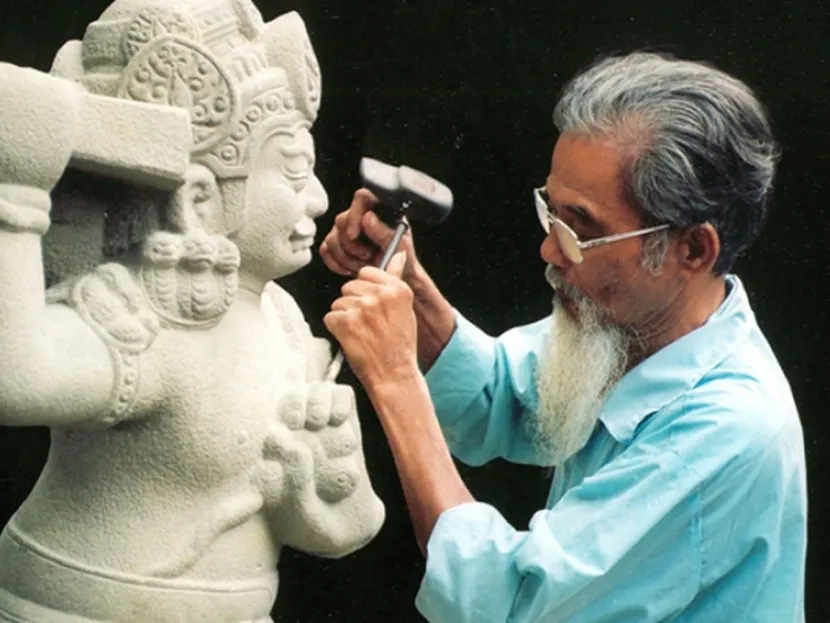
A diverse range of tools and equipment are used to craft extraordinary masterpieces at Non Nuoc marble village
This harmonious fusion of traditional craftsmanship and modern tools not only enhances their precision but also amplifies their efficiency, enabling them to create awe-inspiring works of art.
3. The role of the Stone Carving Village in Vietnam's economy, culture and arts
3.1. Significance of stone carving in Vietnamese culture and religious art
The Non Nuoc stone carving village holds immense cultural significance in Vietnam. Its exquisite rock carvings can be found at adorning temples, pagodas, and in historical sites throughout the country. These sculptures not only enhance the aesthetic appeal of architectural works but also serve as powerful symbols of the Vietnamese people's rich cultural heritage and religious beliefs.
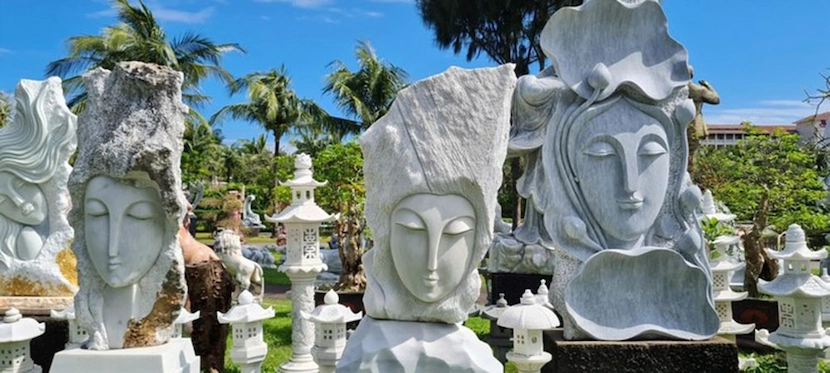
These architectural works is the symbols of the Vietnamese people's rich cultural heritage
During the Vietnam War, the village gained further fame as the US military purchased numerous carvings as souvenirs, attesting to the exceptional craftsmanship and artistic prowess of the local artisans.
The Non Nuoc village is also deeply intertwined with one of the region's major festivals, the Quan The Am festival. Celebrated annually in the second lunar month, this festival holds great significance in Buddhism and provides an opportunity for people to come together and pray for peace.

The Quan The Am festival in Marbles Mountain in Da Nang
Beyond its cultural and historical significance, the stone carving art of Non Nuoc village plays a crucial role in Vietnam's religious artistic expression. The skilled artisans of this village have crafted numerous exquisite sculptures and carved objects that find their place in Buddhist and Taoist temples. These include awe-inspiring Buddha statues, majestic stone dragons, and delicate lotus flowers. These masterpieces not only showcase the artisans' exceptional craftsmanship but also contribute to the spiritual ambiance of these sacred places.
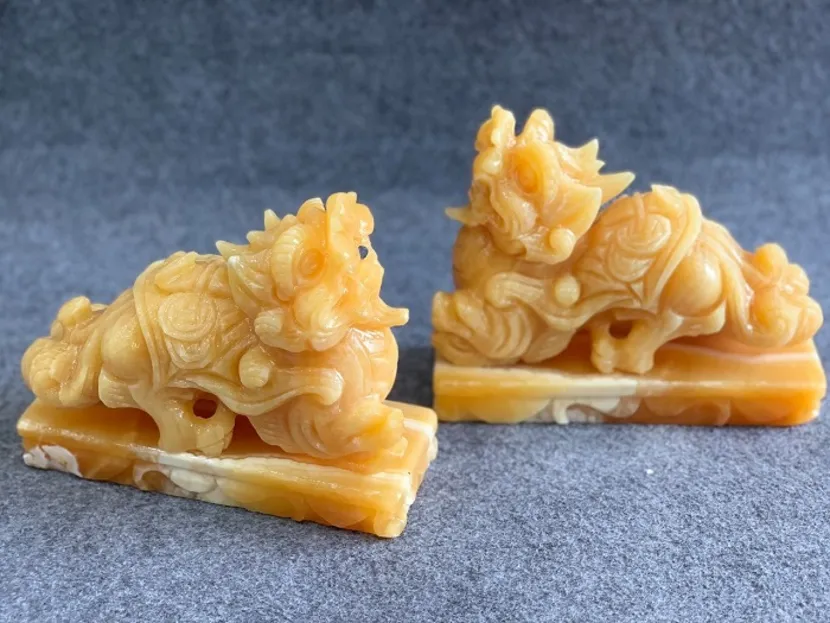
The stone carving art of Non Nuoc village plays a crucial role in Vietnam's religious artistic expression
Recognized as a national intangible cultural heritage, the Non Nuoc Marble Village meets all four criteria for its exceptional value. It showcases the community's unique character and local identity, reflecting the cultural diversity and human creativity that has been inherited through generations. The art of stone carving in this village is not only elastic and long-lasting but also holds a special place in the hearts of the community, who have voluntarily nominated and committed to its protection.
3.2. Stone carving in Vietnamese daily life
Non Nuoc stone carving village offers a wide range of products, varying in shape, size, colour, and type. This place is a hub of creativity, producing over 80,000 fine art stone pieces annually.
The works of art at this place serve various purposes. You can find practical household goods tools for everyday life, such as dishes, vases, and kettles. Additionally, there are spiritual items like tombstones, reliefs, Buddha statues, La statue, Han and Cham statues. For those seeking souvenirs, there are animal statues, portraits of Vietnamese and Western women, as well as revolutionary statues.

The mortar and pestle
For generations, the villagers have diligently preserved the traditional craft of stone carving, passing down their skills and knowledge through the ages. In recent years, Non Nuoc stone carving village has emerged as one of the premier tourist destinations in Da Nang.
4. Current challenges and opportunities of the Stone Carving Village
Preserving the art of stone carving is crucial for ensuring the continuity of this ancient craft. While technological advancements have made carving faster and more industrialised, they have also diminished the meticulousness and dedication of the artisans. Consequently, the number of skilled craftsmen has declined with the rise of the mass-produced substitutes. Furthermore, the traditional stone carving industry in Non Nuoc faces fierce competition from cheaper, mass-produced stone sculptures imported from other countries. This has exerted significant pressure on the local economy and the artisans who rely on this craft for their livelihood.
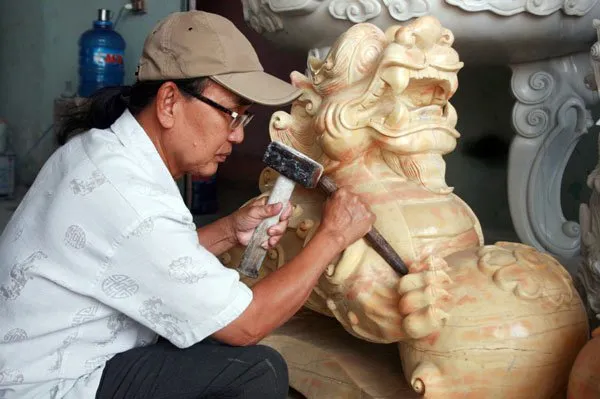
The number of skilled craftsmen has declined due to the development of mass-produced substitutes
Preserving the ancient craft of stone carving is of utmost importance in ensuring its continuity and cultural significance. Various initiatives are currently underway to promote and safeguard this traditional art form, including workshops, exhibitions, and government backing.

Developing tourism is one of the efficient way to promote and safeguard the Non Nuoc stone carving village
However, despite the establishment of the Craft Village Association, the lack of resources hampers its effectiveness. Recognizing the value of Non Nuoc Stone Carving Village, the Da Nang government has taken steps to support its preservation through the implementation of state decisions and policies.
With the combined efforts of the craft village and the implementation of appropriate city policies, it is anticipated that Non Nuoc Village will continue to flourish and solidify its reputation as a quintessential traditional craft village in the future.
5. Planning your visit to Non Nuoc Stone Carving Village
When exploring the central region of Vietnam, travellers should not miss a visit to the enchanting Non Nuoc stone carving village. This remarkable destination serves as a haven for art enthusiasts and cultural aficionados alike. Immerse yourself in a world of creativity as you witness skilled artisans meticulously crafting their masterpieces.
5.1. Best time to visit Non Nuoc Stone Carving Village
The Non Nuoc stone carving village in Da Nang is best visited during the dry season, which extends from February to August. During this period, the weather is dry and pleasant, creating an ideal atmosphere for exploration. Moreover, numerous festivals are held during this time, offering visitors a unique opportunity to immerse themselves in the vibrant local culture of Da Nang.
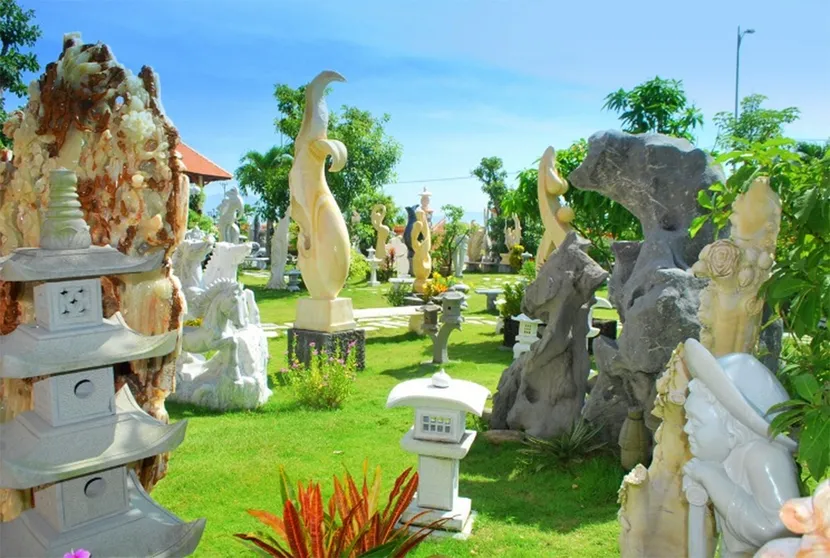
Dry season, which is from February to August, is the best time to visit Non Nuoc stone carving village
5.2. How to get to Non Nuoc Stone Carving Village
The Non Nuoc Village is situated at the base of Ngu Hanh Son mountain, in the Hoa Hai Ward of the Ngu Hanh Son District in Da Nang. Accessing this village is convenient, as there are several transportation options available.
If you are in Hoi An city, taking the bus is an affordable choice. The bus station is conveniently located on Le Hong Phong street, near Hoi An Silk Village. The bus ride to Non Nuoc Village takes approximately 40 minutes.
For those in Da Nang city, renting a motorbike is a popular option. All you need is a motorbike with a full tank of gas and a phone with internet access to utilise Google Maps. The journey from Da Nang city to Non Nuoc Marble Village takes around 25 minutes by motorbike.
Alternatively, you can opt for a taxi or use the Grab service from either Da Nang city or Hoi An city. The taxi fare typically ranges from 150,000 to 200,000 VND.
If you prefer a hassle-free experience, you can book a private tour. This way, a driver will transport you to the village, and a knowledgeable tour guide will introduce you to the village's wonders and assist you in purchasing remarkable rock sculptures.
6. Conclusion
Non Nuoc stone carving village is a remarkable testament to the exquisite creativity of the local community, dedicated to preserving our rich cultural heritage. Nestled among breathtaking landscapes, it offers a wonderful opportunity for those who aspire to delve deeper into Vietnamese cultural tapestry.
Should you need any further information, please feel free to leave a comment below or contact us directly via email: [email protected] and WhatsApp: +84 382 536 266.
See more about Da Nang city:













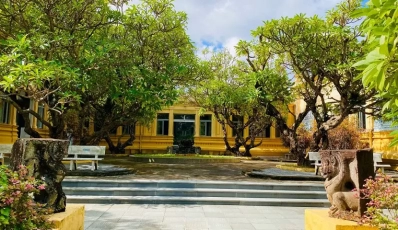







 TRAVELERS' CHOICE 2025
TRAVELERS' CHOICE 2025 



02 Comments
Latvia
It seems so interesting to visit here once. One question please: When we come here to visit, can we join our hands in crafting things?
Vietnam
Write Reply